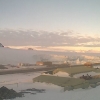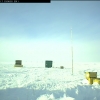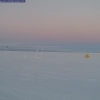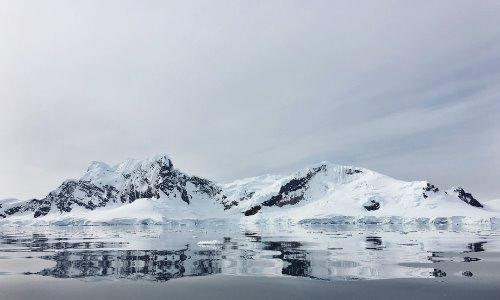Best-known as the Geographic Pole or Terrestrial Pole, the North Pole is often described as the point in the Northern Hemisphere where the axis by which the Earth rotates meets the surface. Notably this should not be mistaken with the North Magnetic Pole of the Earth.
The North Pole is the northernmost point on the Earth, and is positioned diametrically opposite to the South Pole. Geometrically defined as having a latitude of 90° North suggesting the true North, relative to the North Pole all other directions will point south and converging all lined of longitude there defining its longitude as having any degree value.
Antarctica is the southernmost continent on Earth and contains the geographic South Pole. Located in the Antarctic Region of the Southern Hemisphere altogether south of the Antarctic Circle, Antarctica is enclosed by the Southern Ocean.
Facts About the North pole and Antarctica
- Unlike South Pole which is located on a continental mass of land, the North Pole is positioned in the middle of the Arctic Ocean in-between waters that are mostly covered with pieces of a floating sea of ice. This makes it impracticable to build any permanent structure at the North Pole. However the Soviet Union and later Russia since 1937 have been known for annually constructing several manned drifting ice stations known as North Poles contributing to scientific explorations of the Arctic. Many of these manned drifting ice stations have even been known to pass over or come in close proximity to the North Pole.
- Russian explorers every year since 2002 have also established a private and temporary ice base, best-known as Camp Barneo relatively close to the North Pole. These camp bases are known to operate for just a few weeks during the early spring months.
- Scientific research conducted in the 2000 period revealed that the North Pole due to Arctic ice shrinkage may become seasonally ice-fee in 2016 or the latte part of the 21st
- In 1958 the USS Nautilus measures the sea depth at the North Pole at 13,410 feet. Later in 2007 the depth of the sea at the North Pole region according to the Russian Mir submersible was recorded as 13,980 feet.
- The nearest land mass to the North Pole is said to be Kaffeklubben Island often referred to as Coffee Club Island 430 miles in distance and off the northern coast of Greenland. However the closest permanently settled region to the North Pole is Alert, Nunavut, Canada which is advised as the northernmost permanently inhabited place in the world 508 miles from the North Pole.
- By comparison Antarctica is almost twice the size of Australia and with a total area of more than 5 million square miles is the fifth-largest continent in the region next to North America, South America, Africa and Asia. Approximately 98 percent of Antarctica is covered with ice of an average thickness of more than 1.1 miles extending to almost every region except the northernmost part of the Antarctic Peninsula.
- Antarctica with the highest elevation above all other continents is considered as the most windy, driest and coldest desert having a yearly precipitation of no more than 8 inches along the coastline and slightly inland.
- Antarctica is not known for having any permanent human residents, however you may occasionally find between 1,000 to 5,000 individuals habitat the continent throughout the year and scattered across the many research stations located on the continent.
- Antarctica is known only to facilitate organisms which have adapted to the cold harsh climate of the region including several types of protista, algae, fungi, bacteria and certain plants. As well as specific animals such as penguins, seals, mites, tardigrades and nematodes. Areas where the continent is known to have vegetation is commonly referred to as the tundra.
- Historically folk legends and speculations about a Terra Australis or Southern Land dates back to as far as 1820 during the age of Russian explorers Mikhail Lazarev and Fabian Gottlieb von Bellingshausen aboard the Vostok and Mirny warships who first discovered the continental platform of ice. Nonetheless due to the hostile environment, its isolation and the suggested lack of resources Antarctica has remained mostly neglected.
- In 1959 the Antarctic Treaty was collectively signed by twelve countries to regulate international relations concerning Antarctica as the only continent without having a native human population, prohibiting any military activity and mining nuclear detonations, or disposal of nuclear waste. To date 49 countries have endorsed this treaty in support of scientific research and preservation of the ecozone of the continent..
Antarctica Web cams
Powered by a series of Mobotix web cams this website pays tribute to the analysis of the natural Antarctica environment of offering online viewers with a detailed view made from daily photo and web cam observations. The web cam link posted below from the PinguinKam 1a shows penguins living in the Antarctic region and is taken from the Acoustic Observatory in the Antarctic Ocean. PinguinKam 1a is normally updated daily every 15 minutes.
View Antarctica Web cams.
The Unites States Antarctic Program Antarctic Web cams
Arrival Heights Web cam
The McMurdo Station Web cams of the US Antarctic Program positioned just on the edge of Arrival Heights and slightly north of Hut Point on the western side of Hut Point Peninsula. The McMurdo Station Web cam during the Austral Summer months is zoomed out and shows the fuel storage containers, the administrative facilities, the housing and the maintenance area. In the background you’ll see Observation Hill along with a view of the McMurdo Sound along with Trans-Antarctic Mountains behind.
The Observation Hill Web cam
The Observation Hill Web cam is located at the bottom of Observation Hill on a large structure adjacent to the McMurdo Station at about 230 meters. The Web cam offers viewers a first hand view of the McMurdo Station, showing the Crary Science and Engineering Center, a number of dormitories to the right as well as the McMurdo Sound and dock to the left.
View The Observation Hill Web cam.
Here you can watch live webcams located in the geographic North Pole as well as the continent of Antarctica. Cameras are typically situated near scientific research stations. Sometimes you can see penguins, polar bears and other wildlife.
Australian Antarctic Division Webcams
These webcams are located at several stations in Antarctica and are provided by the Australian Government. There are several locations you can view: Mawson, Davis, Casey Macquarie Island and there is also a Krill cam. Also shows current weather conditions.
View Live Webcam: Australian Antarctic Division Webcams

Webcams from Antarctica
This site has links to 5 differet Antarctica webcams including Bird Island, Halley, Rothera, King Edward Point, RRS James Clark Ross and RRS Ernest Shackleton. Webcams update every hour.
View Live Webcam: Webcams from Antarctica

Plato South Pole Webcam
These Antarctica webcams give you a live view from the south pole at Plato Dome A Robotic Obervatory.
View Live Webcam: Plato South Pole Webcam

NOAA North Pole Webcams
This site is brought to you by NOAA and provides live webcams from the North Pole! These cams are only online during the daylight season starting in Spring 2011 as theres not much to see when it is dark 24 hours a day. Includes archived images and animated images.
View Live Webcam: NOAA North Pole Webcams

